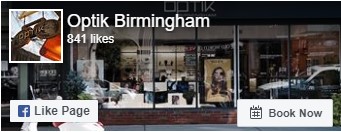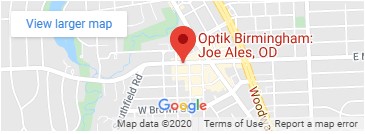
Types and Causes of Amblyopia
This condition is related to the suppression of information from one eye and negatively impacts the development of binocular vision. Causes and classification of this disorder include:
- Muscle imbalance (strabismus amblyopia):
This is the most common cause of amblyopia which occurs due to an imbalance in muscles that position the eye. This leads to cross in or turn out of the eye and prevents them from working together. - Difference in sharpness of vision between the eyes (refractive amblyopia): This is due to significant differences between the prescription in each eye due to vision impairment such as farsightedness, nearsightedness, or an even surface curve of the eye (astigmatism). This results in showing large differences in vision between the eyes
- Deprivation: This is the most severe type of amblyopia, and Its caused by physical problems such as cataracts that reduce one eye’s vision
- Reverse amblyopia: It occurs as a treatment effect for an initial
- diagnosis of amblyopia, which has been treated using eye patching.
- Glaucoma: This is high pressure in your eye that can lead to vision problems and blindness
Other causes of amblyopia include:
- Genetic or family history of amblyopia
- Premature birth
- Damage to one eye due to injury
- Drooping of one of your eyelids
- Vitamin A deficiency
- Corneal ulcer or scar
- Eye surgery
Symptoms of Amblyopia
Amblyopia may be hard to detect until it becomes severe. Early warning signs include:
- An eye that wonders either inward, outward, or outward
- Tendency to bump into objects on one side
- Eyes that appear not to work together
- Double vision
- Poor depth perception
- Squinting or shutting one eye
- Head tilting
- Eye strain
- Visual fatigue
- Headaches
Diagnosis of Amblyopia
A lazy eye ideally needs to be diagnosed and treated as early as possible, preferably before a child is six years of age. Your eye doctor will typically perform a standard eye exam to assess vision in both eyes. This involves a series of tests such as:
- Checking for eye health
- Look for a wandering eye or differences in vision between your eyes
- Eye muscle strength
- Vision clarity
- Identifying letters or shapes on a chart
- Following a light with each eye and then both eyes
- Looking at your eyes with a magnifying device
Treatment of Amblyopia
Treatment options depend on the cause of the lazy eye and how much it affects vision. It is best to begin lazy eye treatment early in childhood when the connections between the brain and the eye are developing. The most successful results occur when treatment starts before age seven. Half the children between 7 and 17 years also respond well to treatment. Your doctor might recommend the following:
Corrective eyeglasses or contact lenses: Amblyopia is sometimes caused by a differing vision in each eye; one eye may be farsighted(hyperopia) or nearsighted(myopia). It can also be an irregular curve in the cornea, which eyeglasses or contact lenses can correct.
Eye patch: Wearing an eye patch over the dominant eye can help strengthen your weaker eye. You may be requested to wear the patch for 1 to 2 hours daily.
Vision therapy: These are a series of exercises and activities that address the root cause and help a person improve binocular visual vision.
Bangerter filter: This is a special type of filter of opaque covering placed on the eyeglass lens of the stronger eye. It blurs the stronger eye and works to stimulate the weaker eye. Bangerter filters should be worn full-time. They can be modified for density and opaqueness over time as symptoms improve. For this reason, they may be useful after patching has occurred as a secondary treatment.
Eye drops: Medicated drops may be used to blur the vision in the dominant eye, making the weaker eye work harder. The medication used atropine which dilates the eye pupil causing blurry vision. Drops may be used once or twice a day, an alternative to wearing a patch.
Surgery: Your child may require surgery if their eyes continue to wander apart or cross with the appropriate eyeglasses to adjust the length or positioning of the eye muscles. It may be used when the following conditions cause amblyopia:
- Droopy eyelid
- Squint
- Cataract
Surgery is also used to improve the cosmetic appearance of the eye. The risks for amblyopia are under-correction and overcorrection, though rare. There are low risks of the surgery, such as infections. Complications that might lead to vision loss are rare. Recovery takes a few days to a week. During recovery, you may notice red or pink tears from the treated eye. The eye might also be red in color and have some swelling and mild pain, which goes away after some time.
Amblyopia may recur in 25% of children; therefore, taking your child for continuous surveillance and monitoring is crucial.
Schedule A Consultation
At Optik Birmingham, we treat amblyopia with proven office-based vision therapy for optimal results to improve quality of life. We personalize treatment plans and conduct one-on-one sessions (therapist-to-patient), which our doctors supervise. We employ the latest cutting-edge technology and techniques to effectively treat amblyopia for people of all ages. Contact us today for more information on how we can help improve your or your child’s vision. We are glad to help.


